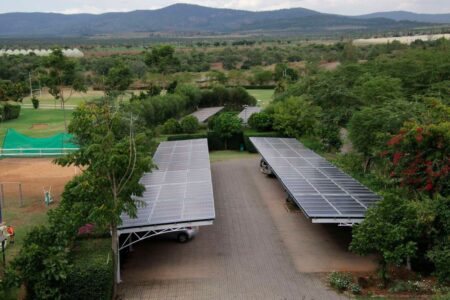About 355 solar contractors, manufacturers and importers received production permits from the Energy and Petroleum Regulatory Authority (Epra) in the year to June 2024, indicating increased demand for solar services.
As electricity prices continue to rise in Kenya, customers have increasingly turned to alternative sources of energy especially solar PV to take advantage of lower prices for solar components such as panels, inverters and batteries.
This demand has attracted hundreds of new companies into the field, doubling the number of solar companies registered by Epra from just 741 in the 2018/19 financial year to 1,603 in 2023/24.
More people are specializing in solar work such as installation and maintenance, with 7,329 PV technicians certified by Epra, compared to just 4,502 five years ago.
“Licenses were granted to 154 solar PV technicians, and 355 solar PV contractors, manufacturers and importers,” EBRA said in its statistical report for the fiscal year 2023/24.
As the solar business booms, each market participant is targeting its own niche, with some focusing on importing solar components from major manufacturers and suppliers in key markets such as China, Japan, Germany and the United States to supply to the world. Local market.
Others specialize in local assembly of solar components, while there are also a growing number of solar companies offering full engineering, procurement and construction work under long-term power purchase agreements with customers, especially large energy users.
Electricity prices have risen sharply in recent years, raising the cost of living and doing business in the country. Large energy users such as manufacturers have been one of the biggest victims of rising electricity prices, with energy costs accounting for about a third of operating costs.
Energy prices are expected to rise further in the coming years, partly due to new public-private partnership agreements that the government is currently seeking to implement to build high-voltage power transmission lines to improve the quality of electricity supply.
Against this background, many energy consumers are completely switching to using captive energy or supplementing their supply from the national grid with captive energy.
Captive power plants operate by generating electricity primarily for the owner’s consumption and not for sale to the public. Total captive power capacity reached a historic high of 532.6 MW in the year ending June 2024.
“Captive power generation remains attractive to commercial and industrial consumers due to its cost-effectiveness, ease of setup and supportive government policies,” Ibra said.
Solar PV and bioenergy are the largest captive energy sources with installed capacities of 229.2 MW and 161.8 MW, respectively. The other projects are waste heat recovery (83.5 MW), hydropower (33 MW), thermal energy (21.3 MW), and geothermal energy (3.7 MW).
